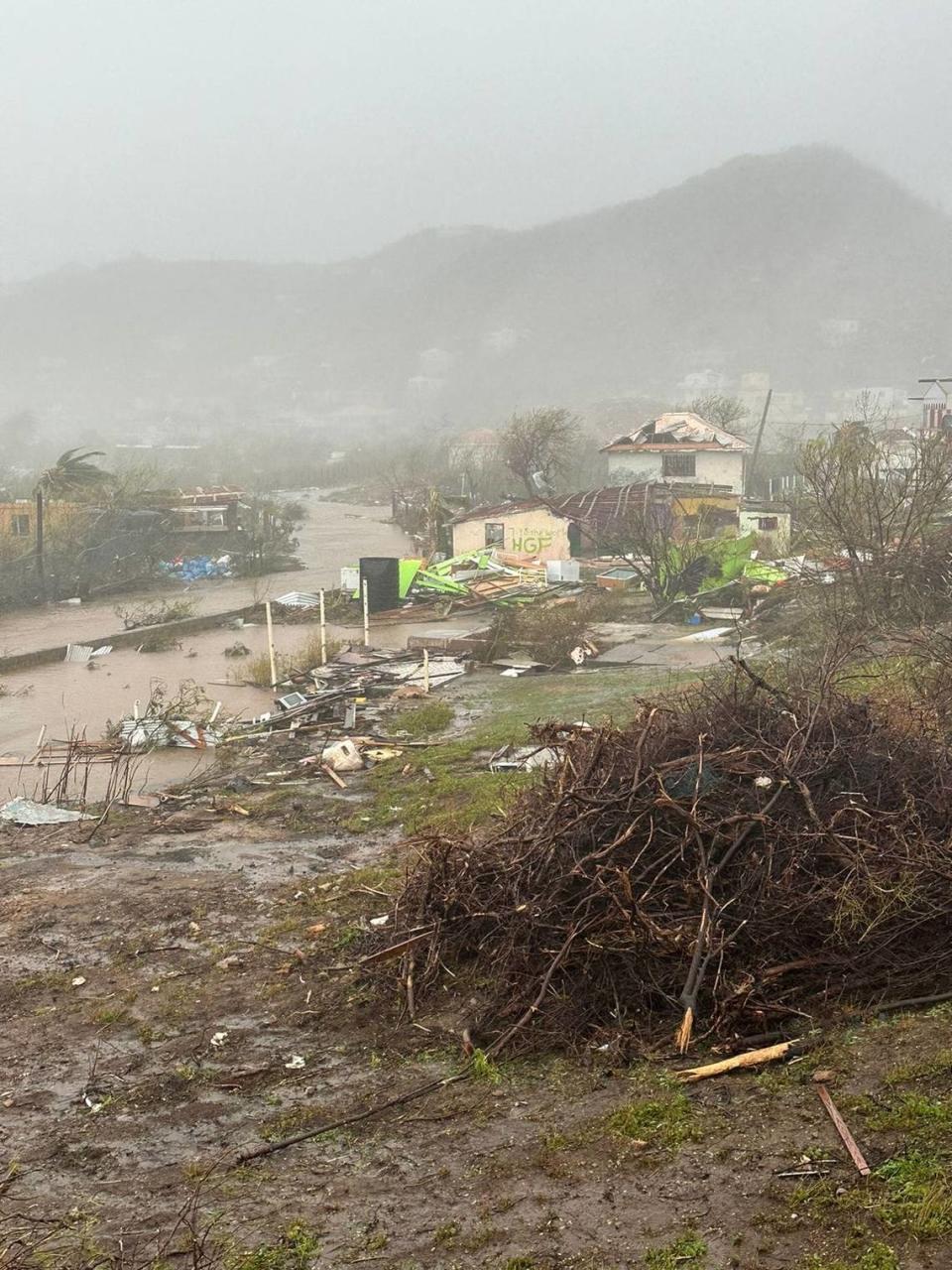‘The situation is grim.’ Hurricane Beryl shreds Caribbean islands, kills at least 4
On the islands of Carriacou and Petite Martinique — ground zero for Hurricane Beryl’s 150-mph eye — the toll is catastrophic: an estimated 95 percent of the homes are heavily damaged and likely uninhabitable.
A day after the monster hurricane ripped through the Southern Caribbean, residents and governments started to come to grips with staggering losses to property and businesses and a growing death toll.
In Grenada, Prime Minister Dickon Mitchell on Tuesday also announced two fatalities in Carriacou and another in Grenada with the possibility of more fatalities a reality. At least one previous death had already been reported in Union Island by the prime minister of St. Vincent and the Grenadines, bringing the total number of confirmed dead from Beryl to four. And Beryl, unfortunately, was just getting started. It was bound for heavily populated Jamaica sometime Wednesday. Prime Minister Andrew Holness urged his nationals to take the hurricane as a serious threat.
Read More: Hurricane Beryl swells to a monster Category 5. It could weaken before it hits Jamaica
“The situation is grim,” Mitchell said in a morning press conference. “There’s almost complete destruction of homes and buildings on the islands. The roads are not passable and in many instances cut off because of the large quantity of debris strewn all over the streets and obviously the danger posed by down power lines.”
Grenada was last struck by a deadly hurricane 20 years ago when a powerful Hurricane Ivan struck the country before battery Jamaica and nearly flattening the Cayman Islands. While Grenada appears to have fared well in comparison to its destruction and dozens of deaths in Ivan, Mitchell said his initial assessment is the devastation of Carriacou and Petite Martinique “are Ivan-like or even worse given the size of the islands.”
Mitchell said a marine advisory had delayed the Coast Guard’s ability to get to Carriacou early Tuesday morning. As he waited for the advisory to be lifted, he appealed for large vessels that could traverse the rough seas. He also appealed to regional Caribbean leaders for helicopters to help a team out to the sister islands.
“Until the roadways are clear, movement within Carriacou itself will still be severely restricted,” he said.
While Beryl’s eye passed over Carriacou and Petite Martinique, its destruction was expansive as both mainland Grenada and nearby St. Vincent were also battered. Mitchell said the north part of Grenada suffered significant damage and destruction.
“To some extent, the north of the island, including Carriacou and Petite Martinique, and the south of the island are almost two completely different places,” he said. While there was minimal damage to the south and power has already been restored, this is not the case in the north, western and eastern parts of the island.
“Numerous of our citizens have lost their roofs and do not have any shelter over their heads,” he said.
Mitchell said shelters remain open and he expects many more will have to go into them after having lost their roofs.
While the country is still trying to assess the toll of the destruction, Arthur Pierre, the deputy coordinator of Grenada’s National Disaster Management Agency said, “We have lost almost 95% of the roof and housing stocks in Petite Martinique and Carriacou.”
Drone video captured by storm chaser @bclemms shows scenes of devastation on the island of Carriacou after Hurricane Beryl slammed into the coast as a Category 4 storm. pic.twitter.com/c2VMJh2o5i
— AccuWeather (@accuweather) July 2, 2024
Authorities said they had had virtually no communication with Carriacou since the storm battered the island, except briefly by satellite phone on Tuesday morning. Among the reports they received was that the hospital was damaged. Mitchell said he did not yet have any information on the actual state of the patients but was hoping to know more with the arrival of a small technical team from the emergency management agency that was scheduled to head to Carriacou with relief supplies.
“In the Grenadine islands, it’s a challenge at the best of times with things like gasoline. So the gasoline stations have been destroyed and as a result the heavy equipment machines don’t have fuel for them to begin the clearance of the roadways so that people could move, and there’s significant risks associated with it because of the fact power lines are down and at this stage we can’t tell whether there’s live electricity or not in them,” Mitchell said.
Mitchell said he’s been assured of support both in terms of relief supplies and assistance from fellow Caribbean leaders, who were briefed earlier in the day about the devastation wrought by Beryl. Guyana, for example, had an aircraft loaded and waiting for clearance to land in Carriacou, which Mitchell said was dependent on roads being cleared or helicopters being made available in order for supplies to be quickly transported to villages.
On Monday, St. Vincent and the Grenadines Prime Minister Ralph Gonsalves said at least 90% of the homes and businesses on Union Island have been destroyed or damaged. Gonsalves said the international airport would remain closed and he planned to visit damaged communities as soon as conditions allow.


